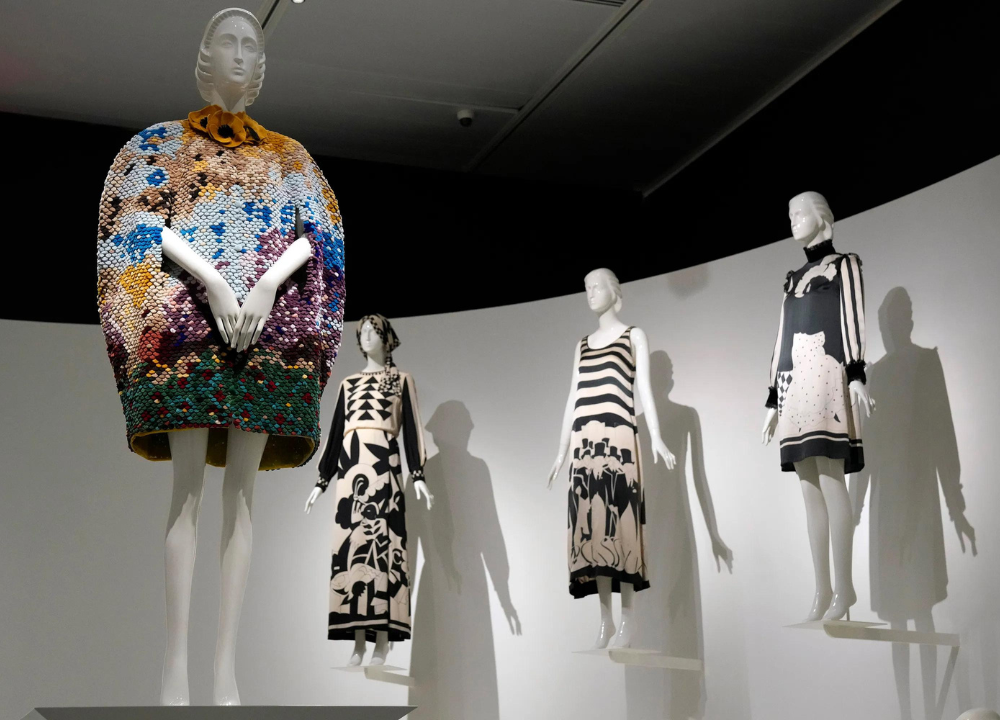Liberal arts colleges offer a unique educational experience. They emphasize broad knowledge and critical thinking skills.
These institutions typically feature smaller class sizes. This allows for more personal interaction between students and professors. Students explore various subjects, from humanities to sciences. They learn to think deeply and communicate clearly. The focus is not just on job skills but also on developing well-rounded individuals.
Liberal arts colleges encourage creativity and critical analysis. Students are often engaged in discussions that challenge their views. This diverse curriculum prepares graduates for many career paths. Understanding the size, focus, and curriculum of these colleges can help students make informed decisions. Let’s dive deeper into what makes liberal arts colleges unique and valuable.
What Are Liberal Arts Colleges?
Liberal arts colleges are unique educational institutions. They focus on broad-based education. Students explore various subjects, not just one area. This helps them think critically and communicate well. Understanding what liberal arts colleges offer is important for students.
Liberal arts colleges emphasize a well-rounded education. They aim to develop students’ intellectual skills. Students often study humanities, sciences, and social sciences. This prepares them for diverse careers and life challenges.
Size Of Liberal Arts Colleges
Most liberal arts colleges are small to medium-sized. Class sizes are typically small. This allows for personal attention from professors. Students can engage in discussions and ask questions easily. Here are some key points about the size:
- Average student body: 1,000 to 3,000 students
- Low student-to-faculty ratio
- Close-knit community
Focus Of Liberal Arts Colleges
The focus is on undergraduate education. Professors often prioritize teaching over research. Students engage in various disciplines. They gain knowledge in multiple fields. This breadth of education is valuable. It encourages creativity and adaptability.
Curriculum Of Liberal Arts Colleges
The curriculum is diverse and flexible. Students typically complete general education requirements. They can choose a major that interests them. Here’s a look at common areas of study:
| Field of Study | Examples of Majors |
|---|---|
| Humanities | Literature, History, Philosophy |
| Social Sciences | Sociology, Psychology, Political Science |
| Natural Sciences | Biology, Chemistry, Physics |
| Fine Arts | Theater, Music, Visual Arts |
Students also participate in extracurricular activities. These help develop teamwork and leadership skills. Internships and study abroad programs are common. They provide real-world experience.
Importance Of Size
Liberal arts colleges play a key role in higher education. They focus on developing critical thinking and communication skills. The size of these colleges greatly impacts student experience and learning. Smaller colleges offer close-knit communities. Larger colleges provide more resources and diversity. Understanding the importance of size helps students choose the right fit for their education.
Small Vs. Large Colleges
Choosing between small and large liberal arts colleges can shape a student’s college experience. Each type has unique benefits.
- Small Colleges:
- Intimate class sizes
- More personal attention from professors
- Closer friendships with peers
- Large Colleges:
- Wider range of courses and majors
- More extracurricular activities
- Diverse student body
Here’s a quick comparison of small and large liberal arts colleges:
| Feature | Small Colleges | Large Colleges |
|---|---|---|
| Average Class Size | 10-20 students | 30-100 students |
| Student-Faculty Ratio | 8:1 | 15:1 |
| Campus Size | Compact | Spacious |
| Community Feel | Close-knit | Diverse |
Both options offer strong academic programs. The choice depends on personal preferences and learning styles.
Campus Community Dynamics
The size of a college influences its campus community. Smaller colleges often create a family-like atmosphere. Students know each other and faculty members well. This environment encourages collaboration and support.
- Benefits of Small Campus Communities:
- Strong relationships with professors
- Opportunities for leadership roles
- More involvement in campus activities
- Benefits of Large Campus Communities:
- Access to a variety of clubs and organizations
- Exposure to different cultures and ideas
- Networking opportunities with diverse groups
In smaller colleges, students often feel comfortable sharing ideas. They can participate in discussions easily. In larger colleges, students can learn from many perspectives. They can join multiple groups based on interests.
Both types of colleges provide valuable community experiences. Each offers unique opportunities for personal growth and social development.
Curriculum Focus
Liberal Arts Colleges offer a unique approach to education. They focus on broad learning rather than narrow specialization. This method allows students to explore various subjects. The curriculum in these colleges emphasizes critical thinking, creativity, and effective communication. Students develop skills that are useful in many fields. The curriculum focus is a vital part of what makes these colleges special.
Interdisciplinary Learning
Interdisciplinary learning is a key feature of the curriculum at Liberal Arts Colleges. This approach encourages students to connect ideas across different subjects. Students learn to think outside traditional boundaries. This method fosters innovation and creativity. Here are some benefits of interdisciplinary learning:
- Encourages collaboration among students.
- Promotes a deeper understanding of complex issues.
- Prepares students for real-world problems.
- Enhances communication skills.
Courses often combine subjects like science and art. Students might take a class that blends psychology with literature. This creates a richer learning experience. Here is an example of an interdisciplinary course:
| Course Title | Subjects Combined | Description |
|---|---|---|
| Art and Emotion | Psychology, Art History | Explores how art affects emotions and human behavior. |
| Science and Society | Environmental Science, Sociology | Studies the impact of science on social issues. |
Critical Thinking Skills
Critical thinking is vital in Liberal Arts Colleges. Students learn to analyze information carefully. They ask questions and challenge assumptions. This skill helps in making informed decisions. Here are some ways the curriculum develops critical thinking:
- Engaging in debates and discussions.
- Writing essays that require analysis.
- Conducting research projects.
- Evaluating different viewpoints on topics.
Courses often include case studies. Students analyze real-world situations. This practice sharpens their ability to think critically. For example:
- Studying historical events to understand their impact.
- Evaluating different solutions to environmental problems.
These experiences prepare students for various careers. Employers value critical thinking skills. Graduates are ready for challenges in any field.
Student Life Experience
Liberal Arts Colleges offer a unique student life experience. These institutions focus on small class sizes and personal interaction. Students engage deeply in academics and social activities. This environment shapes not only their education but also their personal growth.
Clubs And Organizations
Clubs and organizations play a vital role in the student experience at liberal arts colleges. They provide students with opportunities to connect, learn, and have fun. Students can explore interests outside the classroom. Most colleges offer a variety of clubs, catering to many passions.
- Academic Clubs: Enhance your learning with peers.
- Cultural Organizations: Celebrate diversity through events and activities.
- Service Groups: Get involved in community service projects.
- Sports Teams: Compete in athletics or enjoy recreational sports.
These clubs often host events, workshops, and meetings. Students can lead initiatives and create new groups. Here’s a table showing common types of clubs:
| Type of Club | Description | Examples |
|---|---|---|
| Academic | Focus on specific fields of study. | Math Club, Science Society |
| Cultural | Promote cultural awareness and diversity. | International Students Association |
| Service | Engage in community projects. | Habitat for Humanity |
| Sports | Participate in competitive or recreational sports. | Intramural Soccer, Ultimate Frisbee Club |
Joining a club helps students make friends and build a network. The clubs foster a sense of belonging. They create memories that last a lifetime.
Social Opportunities
Social opportunities at liberal arts colleges are abundant. Students enjoy a vibrant campus life filled with events and activities. These chances for social interaction enhance the college experience.
- Cultural Events: Enjoy performances, art shows, and festivals.
- Workshops: Participate in skill-building sessions.
- Networking Events: Meet professionals and alumni.
- Weekend Activities: Join movie nights, game nights, and more.
Students often gather in common areas to relax and socialize. Cafes and lounges serve as popular meeting spots. Here’s a list of common social events:
- Welcome Week: Kick off the school year with fun activities.
- Homecoming: Celebrate school spirit with alumni.
- Spring Fest: Enjoy outdoor activities and entertainment.
- Finals Week Events: Stress relief activities during exams.
These social opportunities create lasting friendships. They help students grow and learn outside the classroom. Engaging in campus life enriches their overall college experience.
Career Preparation
Liberal arts colleges focus on broad education. They offer smaller class sizes and personalized attention. This approach helps students develop critical thinking and communication skills. Career preparation is a key part of their mission. Students gain practical experiences and build networks that help them succeed after graduation.
Internship Opportunities
Internships play a vital role in career preparation at liberal arts colleges. These programs provide real-world experience. Students apply what they learn in the classroom. They also gain insights into their chosen fields. Internships can be found in various sectors, including:
- Business
- Non-profit organizations
- Education
- Healthcare
- Technology
Many colleges have dedicated internship offices. These offices help students find opportunities. They also provide guidance on resumes and interviews. Here’s a quick look at how internships benefit students:
| Benefit | Description |
|---|---|
| Real-World Experience | Students gain hands-on skills and knowledge. |
| Career Exploration | Internships help students discover their interests. |
| Resume Building | Internships add value to a student’s resume. |
| Job Opportunities | Internships can lead to full-time positions. |
Internships make students more competitive in the job market. They also help build confidence and professional skills.
Networking Resources
Networking is crucial for career success. Liberal arts colleges provide various resources for students to connect with professionals. These resources help students build relationships in their fields. Here are some common networking opportunities:
- Alumni events
- Career fairs
- Guest speaker series
- Workshops and seminars
Alumni networks are especially strong. Many graduates stay connected to their colleges. They often offer mentorship and job leads. Students can benefit from:
- Access to a wide range of industries
- Advice from experienced professionals
- Opportunities for internships
- Insights about job markets
Colleges often have career centers. These centers provide resources such as:
- Resume and cover letter writing
- Interview preparation
- Job search strategies
Networking resources help students gain confidence and make informed career choices.
Conclusion
Liberal arts colleges offer unique benefits. They focus on small class sizes and personalized learning. Students gain a broad education in various subjects. This approach fosters critical thinking and creativity. Graduates are well-prepared for different careers. They can adapt to changes in the job market.
Choosing a liberal arts college can be a smart decision. It opens doors to many opportunities. Explore your options. Find the right fit for your goals. A well-rounded education awaits you.




